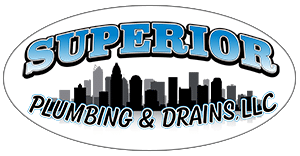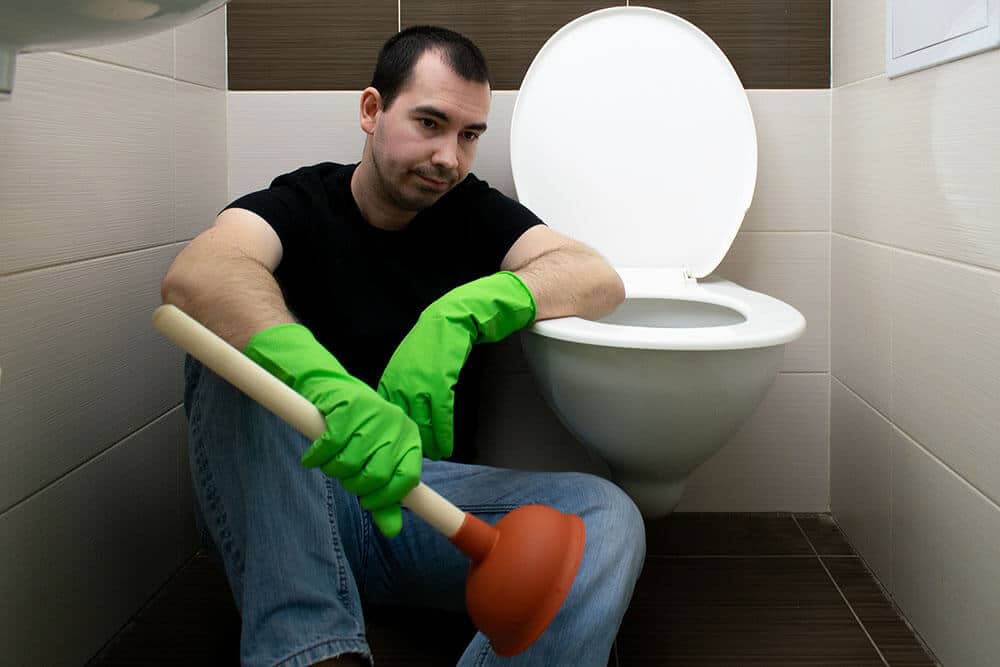Living with a clogged toilet is impossible; no ifs or buts about it. And this usually happens when we get in the habit of flushing non-flushable items. Unfortunately, many companies now advertise items that clog the toilet as flushable, such as baby wipes, tampons, kitty litter, and toilet brushes. As they are labeled ‘flushable’ and ‘biodegradable,’ people don’t hesitate to flush them down the toilet drain.
Of course, we don’t know the damage it’s causing until the drains start to back up. And by then, it’s usually too late. These items take a long time to decompose, resulting in a clogged toilet.
It’s best to pay close attention to notice the first signs of a clogged toilet and rectify this situation on time. Keep reading this article to find out all the reasons that cause clogged toilets.
Why Toilets Get Clogged and How To Fix It?
If you are thinking, why is my toilet clogged again? You must be doing something that results in a clogged toilet. Learn the reasons and clogged toilet solutions to ensure your toilet gets clogged as little as possible.
- Partial or Completely Blocked S-Trap Drain
- Damaged or Restricted Sewer Lines
- Old or Low Pressured Flushing System
- Blocked Plumbing Vents
- Hard-Water Build Up
1. Partial or Completely Blocked S-Trap Drain
On the back of the toilet, you can see an S-shaped pipe that comes up the floor or ground, winding into the toilet bowl. This pipe is called an S-trap drain, responsible for evacuating odorous sewer gases that do not pass through the toilet bowl and can enter the house.
Some toilet designs also use P-trap instead of S-trap, but it serves the same purpose. If your S-trap or P-trap is completely clogged, it will block the main toilet frequently. That is because a clogged S-trap or P-trap causes water backflow. Water takes longer to flow down the toilet drain after flushing if it is blocked.
Use a drain snake for the clogged toilet to clear the blockage. If you can’t remove the blockage this way, you need to call a plumber.
2. Damaged or Restricted Sewer Lines
The main sewer line exiting your house is mostly underground, emptying in the municipal sewer system or a septic tank. Even if it is protected from dirt, weather conditions, and debris because it is underground, if you have trees in your area, their roots can wrap around the pipe and constrict the water and waste flow.
Sometimes, sewer pipes also get punctured due to trees or area disturbance around the pipeline. As your private sewer line is directly connected with the main sewer pipe, dirt and rocks can enter your house sewer line from the damaged point. When these foreign items keep collecting over time, they clog the sewer, leading to toilet blockage.
A restricted or damaged sewer line is an issue that only a professional can fix. However, you can ensure that your sewer line area isn’t rocky and stays well maintained.
3. Old or Low Pressured Flushing System
Old flushing systems lose their power over time, creating less pressure whenever you flush them.
An old toilet and flushing system cannot properly break down the waste despite regular maintenance. When waste doesn’t break down properly, it accumulates and blocks the sewer line. This ultimately results in a clogged toilet.
If this is an issue with your toilet system, then the solution for the clogged toilet is to change your flushing system ASAP. But if the problem persists after changing your flush system, then this means your sewer lines and toilet is clogged with tissue papers and feces. You must call a plumber to clean and remove waste from your sewer pipes.
4. Blocked Plumbing Vents
In a modern toilet and plumbing system, roof vents flush out the air from the drain pipe. This prevents air vacuum formation, which interferes with drain flow. The air must circulate for the plumbing pipes to work smoothly, replacing the air vacuum.
If the roof vent is filled with stray leaves, branches, debris, or bird’s nest, it disturbs the air and drain’s flow, clogging the toilet. When this happens, the water stays trapped in the plumbing. As pipes don’t have enough space to contain it, the water starts flowing back up or creates a leak in the lines to escape.
This is a problematic blockage to spot because not many people know blocked plumbing vents result in clogged toilets. The blocked plumbing vents warning signs are:
- Water takes too long to drain
- Dry or empty flush tank
- The rotten smell of toxic sewer gases
- Gurgling sounds from the draining system
The clogged toilet home remedy to fix blocked plumbing vents is by cleaning out the debris and making sure birds and animals don’t wander in to build a nest. However, you must be careful because you must scramble across the roof to unclog the plumbing vent. That is why most people let specialists do this job.
5. Hard-Water Build Up
Hard water is a global problem, and America ranks high on the list because 85% of water in America is hard water. Even though using hard water is not fatal, it creates multiple adverse effects on the skin and the plumbing system. Hard water has natural minerals such as calcium and magnesium, making a white chalk-like film on faucets, showers, and inside drain pipes.
Hard water is terrible for the plumbing system because it reacts with residual soap water. This results in soap buildup in drain pipes which clogs the drain and damages fixtures’ quality. Moreover, the minerals form a white film that is difficult to remove from toilets. This buildup reduces the space for water and waste as they pass through the pipes. And the more hard water you have, the stronger the film it creates inside lines.
The best way to fix this issue is to use a solution to flush out all the residue buildup from your toilet and drain system. In addition, it’d be best to install a water softener that decreases the high mineral amount from the water before usage. This ensures that white film-like substance doesn’t accumulate in your toilet again.
8 Signs to Identify Clogged Toilet
Now that you know the reasons behind your clogged toilet, here are the signs that can help you spot it before it can severely damage your toilet system, drain pipes, and sewer lines:
- Slow water drainage from the toilet bowl, or the water backs up after flushing
- A full toilet bowl or water overflowing from the toilet bowl after you flush
- Foul and bad odors coming from the bathroom, toilet, shower stall, bathtub, and kitchen sink
- Sewer gases buildup in toilet and bathroom
- Emission of toilet paper and overflow of water from the gully trap
- Gurgling noises coming from toilet, pipes, and drains
- Stagnant and standing water on the ground, near pipes, toilet, and plumbing
- Leakage of drain pipes from multiple points
Unclog Your Toilet – Get Professional Help!
A clogged toilet system can result in discomfort as it is terrible for hygiene and waste disposal. In addition, if you ignore a blocked toilet system for long, it results in severe and permanent damage to drain pipes and sewer lines. That is why you must check for clogged toilets whenever significant signs appear. Also, as you know the exact reason behind the clog, use the correct solution without trial and error.
However, some solutions are impossible or too risky for DIY. That is why you must call a professional plumbing service and let them handle the job. Give us a call at (704) 289-6858!





